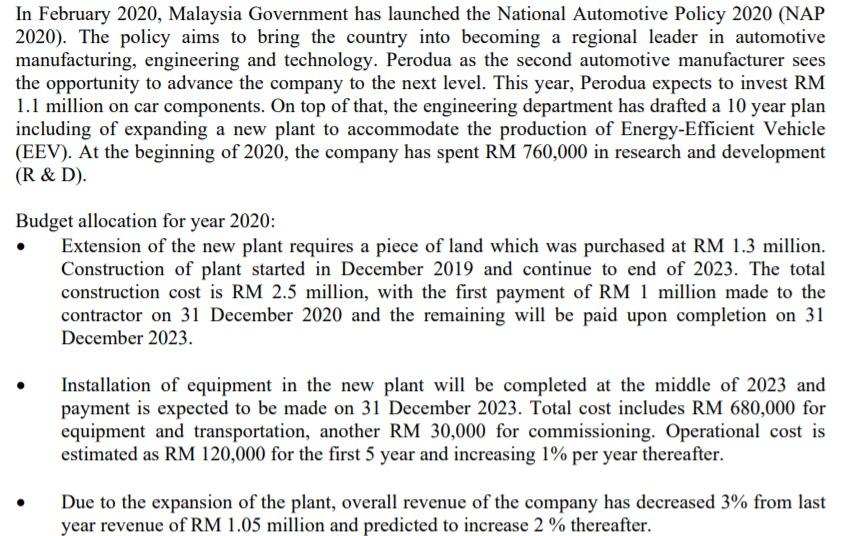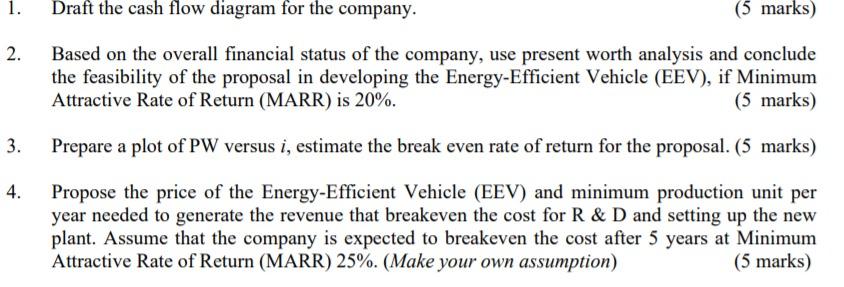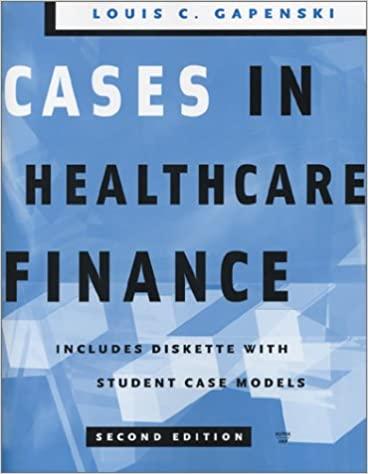

In February 2020, Malaysia Government has launched the National Automotive Policy 2020 (NAP 2020). The policy aims to bring the country into becoming a regional leader in automotive manufacturing, engineering and technology. Perodua as the second automotive manufacturer sees the opportunity to advance the company to the next level. This year, Perodua expects to invest RM 1.1 million on car components. On top of that, the engineering department has drafted a 10 year plan including of expanding a new plant to accommodate the production of Energy-Efficient Vehicle (EEV). At the beginning of 2020, the company has spent RM 760,000 in research and development (R & D). Budget allocation for year 2020: Extension of the new plant requires a piece of land which was purchased at RM 1.3 million. Construction of plant started in December 2019 and continue to end of 2023. The total construction cost is RM 2.5 million, with the first payment of RM 1 million made to the contractor on 31 December 2020 and the remaining will be paid upon completion on 31 December 2023. Installation of equipment in the new plant will be completed at the middle of 2023 and payment is expected to be made on 31 December 2023. Total cost includes RM 680,000 for equipment and transportation, another RM 30,000 for commissioning. Operational cost is estimated as RM 120,000 for the first 5 year and increasing 1% per year thereafter. Due to the expansion of the plant, overall revenue of the company has decreased 3% from last year revenue of RM 1.05 million and predicted to increase 2% thereafter. 1. Draft the cash flow diagram for the company. (5 marks) 2. Based on the overall financial status of the company, use present worth analysis and conclude the feasibility of the proposal in developing the Energy-Efficient Vehicle (EEV), if Minimum Attractive Rate of Return (MARR) is 20%. (5 marks) 3. Prepare a plot of PW versus i, estimate the break even rate of return for the proposal. (5 marks) 4. Propose the price of the Energy-Efficient Vehicle (EEV) and minimum production unit per year needed to generate the revenue that breakeven the cost for R & D and setting up the new plant. Assume that the company is expected to breakeven the cost after 5 years at Minimum Attractive Rate of Return (MARR) 25%. (Make your own assumption) (5 marks) In February 2020, Malaysia Government has launched the National Automotive Policy 2020 (NAP 2020). The policy aims to bring the country into becoming a regional leader in automotive manufacturing, engineering and technology. Perodua as the second automotive manufacturer sees the opportunity to advance the company to the next level. This year, Perodua expects to invest RM 1.1 million on car components. On top of that, the engineering department has drafted a 10 year plan including of expanding a new plant to accommodate the production of Energy-Efficient Vehicle (EEV). At the beginning of 2020, the company has spent RM 760,000 in research and development (R & D). Budget allocation for year 2020: Extension of the new plant requires a piece of land which was purchased at RM 1.3 million. Construction of plant started in December 2019 and continue to end of 2023. The total construction cost is RM 2.5 million, with the first payment of RM 1 million made to the contractor on 31 December 2020 and the remaining will be paid upon completion on 31 December 2023. Installation of equipment in the new plant will be completed at the middle of 2023 and payment is expected to be made on 31 December 2023. Total cost includes RM 680,000 for equipment and transportation, another RM 30,000 for commissioning. Operational cost is estimated as RM 120,000 for the first 5 year and increasing 1% per year thereafter. Due to the expansion of the plant, overall revenue of the company has decreased 3% from last year revenue of RM 1.05 million and predicted to increase 2% thereafter. 1. Draft the cash flow diagram for the company. (5 marks) 2. Based on the overall financial status of the company, use present worth analysis and conclude the feasibility of the proposal in developing the Energy-Efficient Vehicle (EEV), if Minimum Attractive Rate of Return (MARR) is 20%. (5 marks) 3. Prepare a plot of PW versus i, estimate the break even rate of return for the proposal. (5 marks) 4. Propose the price of the Energy-Efficient Vehicle (EEV) and minimum production unit per year needed to generate the revenue that breakeven the cost for R & D and setting up the new plant. Assume that the company is expected to breakeven the cost after 5 years at Minimum Attractive Rate of Return (MARR) 25%. (Make your own assumption)








